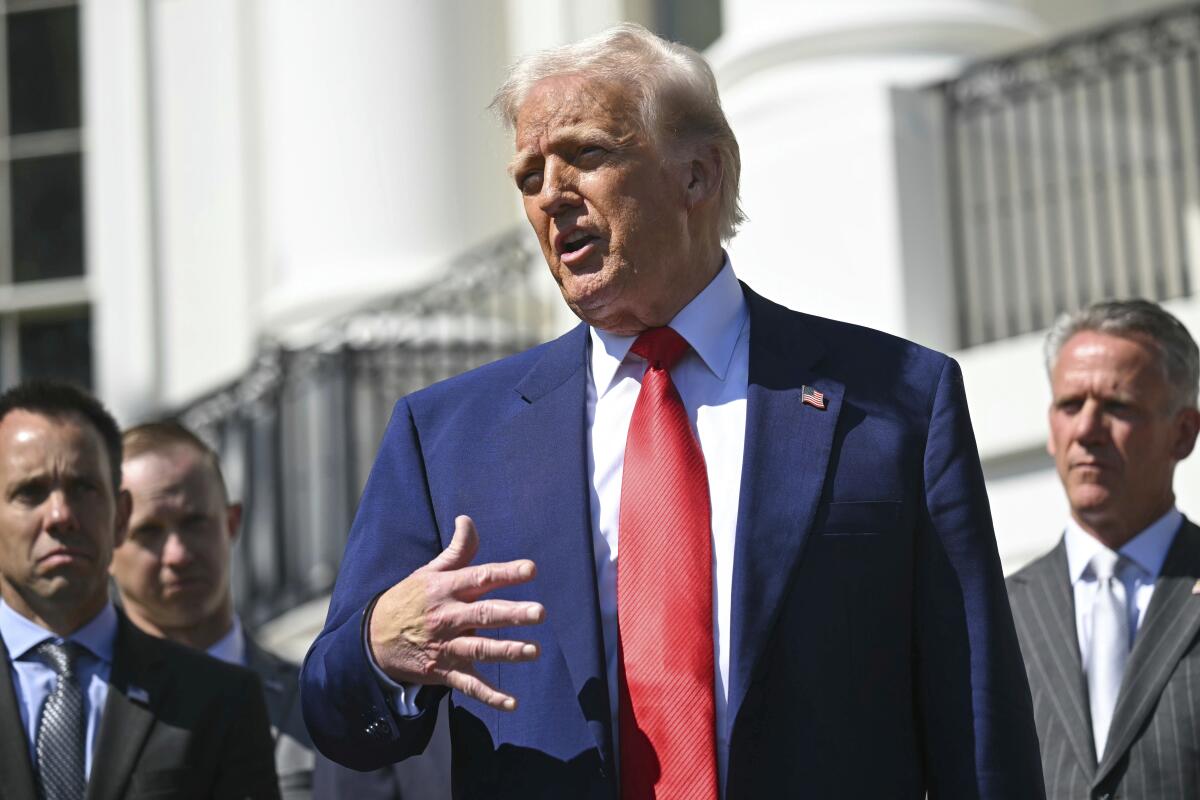Executive Summary
- The proposed budget significantly cuts funding for rental assistance programs, potentially impacting millions of low-income households and increasing homelessness.
- Healthcare programs, including the CDC and NIH, face substantial budget reductions, leading to concerns about public health and biomedical research.
- Defense spending and border security receive significant increases, reflecting the administration's priorities, but drawing criticism for neglecting other essential services.
Event Overview
President Trump's 2026 budget proposal, released Friday, outlines a vision of reduced government spending on social programs and increased investment in defense and security. The budget recommends sweeping cuts to agencies like the Department of Housing and Urban Development (HUD), the Centers for Disease Control and Prevention (CDC), the National Institutes of Health (NIH), and the Department of Education. These cuts aim to reduce government bureaucracy and give states more control over program design and funding. At the same time, the proposal calls for increased spending on defense, border security, and veterans' affairs. The budget is a proposal and Congress will ultimately decide on appropriations.
Media Coverage Comparison
| Source | Key Angle / Focus | Unique Details Mentioned | Tone |
|---|---|---|---|
| Los Angeles Times | Impact on California rental assistance programs | Highlights the potential impact on California, where over 560,000 households use federal rental assistance. Quotes Lourdes Castro Ramirez, CEO of the Housing Authority of the City of Los Angeles, on the potential to reverse progress on homelessness. | Critical, focusing on negative consequences |
| Healthcare Dive | Healthcare budget cuts and HHS reorganization | Details specific cuts to the CDC, NIH, HRSA, and SAMHSA. Mentions the 'Make America Healthy Again' initiatives and HHS Secretary Robert F. Kennedy, Jr.'s role. | Informative, with a focus on specific program cuts |
| CNN Politics | Overall budget blueprint and political reactions | Provides a broad overview of budget cuts across various sectors, including education, environment, and foreign aid. Includes quotes from Republican senators Collins and Wicker expressing concerns about the proposed budget. | Comprehensive, politically balanced |
Key Details & Data Points
- What: President Trump's 2026 budget proposal outlines significant cuts to various social programs and increases in defense spending.
- Who: Key individuals and organizations involved include President Donald Trump, Housing and Urban Development Secretary Scott Turner, HHS Secretary Robert F. Kennedy Jr., members of Congress (Senators Collins, Murray, and Wicker), and agencies like HUD, CDC, NIH, and the Department of Education.
- When: The budget proposal was unveiled on Friday, May 5th or 8th, 2025, outlining recommendations for fiscal year 2026 spending.
- Where: The budget proposal impacts federal programs across the United States, with specific regional effects highlighted in California.
Key Statistics:
- Defense Spending Increase: 13% ($1 trillion total)
- Non-Defense Discretionary Spending Cut: 23% ($163 billion)
- HUD Rental Assistance Cut: $26 billion
Analysis & Context
The proposed budget reflects the Trump administration's priorities of reducing government spending, shifting responsibility to states, and bolstering national security. The cuts to social programs, particularly rental assistance and healthcare, are likely to face strong opposition from Democrats and advocacy groups, who argue that they will disproportionately harm low-income individuals and families. The proposed reorganization of the NIH and other agencies has raised concerns about political interference in scientific research. While the budget proposal is unlikely to pass Congress in its current form, it sets the stage for contentious budget negotiations and highlights the stark differences in priorities between the Trump administration and its political opponents.
Notable Quotes
These cuts could reverse our progress and further strain local efforts to solve the affordability, housing supply, and homelessness crisis.
This budget proposal would set our country back decades by decimating investments to help families afford the basics, to keep communities safe, and to ensure America remains the world leader in innovation and lifesaving research.
President Trump successfully campaigned on a Peace Through Strength agenda, but his advisers at the Office of Management and Budget were apparently not listening.
Conclusion
President Trump's 2026 budget proposal signals a significant recalibration of federal spending, characterized by substantial reductions to non-defense discretionary programs, including a potential 26% cut to Health and Human Services (HHS) discretionary funding and a staggering 44% cut to HUD. These cuts aim to reduce government bloat and target programs perceived as wasteful or misaligned with the President's priorities. Simultaneously, the budget prioritizes investments in defense, homeland security, and specific energy initiatives, such as nuclear technology, while curtailing funding for climate change-related activities and renewable energy. This proposal has ignited fierce opposition, with critics arguing that it undermines essential services, jeopardizes vulnerable populations, and shifts financial burdens onto states already facing budget shortfalls. The fate of the budget hinges on Congressional negotiations, where significant revisions are expected, particularly concerning the proposed cuts to social programs and the freeze on defense spending. The debates are likely to center on the balance between fiscal responsibility, national security, and social welfare, highlighting fundamental ideological differences between Democrats and Republicans.
Disclaimer: This article was generated by an AI system that synthesizes information from multiple news sources. While efforts are made to ensure accuracy and objectivity, reporting nuances, potential biases, or errors from original sources may be reflected. The information presented here is for informational purposes and should be verified with primary sources, especially for critical decisions.









